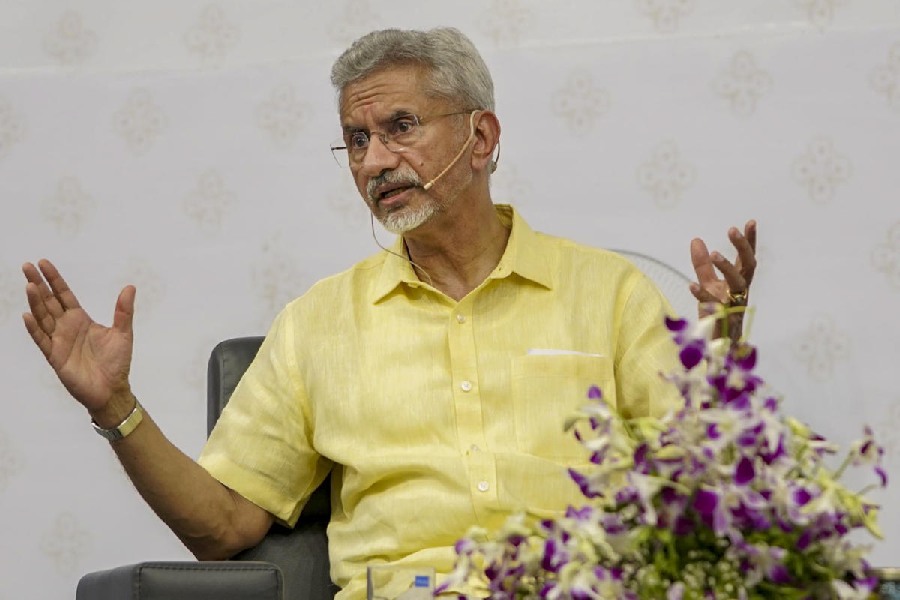|
|
Harold Larwood By Duncan Hamilton, Quercus, Rs 350
Harold Larwood’s name is inextricably linked to what in cricket history has come to be called the Bodyline series, the Test matches played between England and Australia in Australia in 1932-33. It was Larwood’s finest hour but also his swansong since he never played a Test match again. There was something heroic and therefore tragic in Larwood’s exit from Test cricket, and eventually from cricket itself. Duncan Hamilton’s biography, researched in detail but bordering on hagiography, attempts to capture the grandeur and the poignancy of Larwood’s life and career.
The person who would become one of the greatest fast bowlers — Hamilton believes the greatest — was born in a small mining community in Nottinghamshire. He was born to relative poverty and like his father went down the mining shaft when he was barely in his teens. Mining made Larwood a strong lad even though his built and height (barely 5 feet 7 inches) didn’t convey that impression. Cricket and fast bowling soon became his overwhelming passions, and in 1923, when he was 19, he joined the staff of Trent Bridge cricket ground. By 1925, he was playing for his county and striking terror among batsmen with his sheer pace. Which other fast bowler could claim that in his second big season in county cricket, he had clean bowled Jack Hobbs in both innings? It was a word from Hobbs, the most respected professional and the greatest batsman of that time, in the right ears that got the miner’s boy from Nottingham into the arena of Test cricket.
Hamilton’s researches into Larwood’s early days as a cricketer reveal that the person who transformed a scrawny 19 year old into a powerful and menacing fast bowler was the Nottinghamshire coach, James Iremonger. The latter emphasized to Lol — as Larwood came to be affectionately called by all those who knew him — the importance of discipline and balance. He perfected Larwood’s run-up — carpet slipper it came to be called — and action. By the time Iremonger had finished with Larwood and let him loose upon batsmen in the English county circuit, Larwood was a model fast bowler.
Despite his enormous potential and talent, Larwood had low self-esteem and confidence. The then Nottinghamshire captain, A.W. Carr, took Larwood under his wings. Hamilton is rather good in depicting the Carr-Larwood relationship, and how it was a dress rehearsal for the Jardine-Larwood relationship, which was so critical for the success of Bodyline. Larwood needed strong captains to whom he could look up to; this brought out the best in him as a bowler. Given the social realities of that time, this obviously had something to do with the ways professionals related to amateurs.
Larwood’s Test career didn’t get off to a spectacular start. The main reason for this was that his entry into international cricket practically coincided with that of the batting phenomenon called Don Bradman. The latter’s batting performance, especially in the summer of 1930, during his first tour of England, has become the stuff of legend. That leather hunt left a deep scar on Larwood. There was also a sincere admiration for Bradman’s batting genius. Many years later in 1950, while sitting with Neville Cardus and watching a Test in Melbourne, he noted how quickly the wickets fell and said sadly, but very significantly (and this is the last and perhaps the most telling anecdote in Hamilton’s anecdote-filled narrative): “Look at them. They’re getting out one after the other. Why, when I think of my own cricket career, I seem to have spent all my time bowling to Bradman.’’
Playing against Bradman left another cricketer thinking. His name was Douglas Jardine (Winchester and Oxford), who, when he was named captain for the Australian tour of 1932-33, quickly realized that the only way to win back the Ashes was to devise a strategy to restrict Bradman. He had a glimpse of such a strategy in the dying moments of a day’s play on a drying pitch at the Oval Test in 1930 when Bradman had been distinctively uncomfortable against the short rising ball coming to his body.
Jardine decided to capitalize on this weakness. He had in Larwood a bowler of deadly accuracy. He sat with F.R. Foster (who had bowled leg theory before WWI) to get field placings and then secured a team with three other fast bowlers, Voce, Bowes and Allen. In Australia, the plan was carried out to perfection with the fast bowlers (Allen refused to carry out the orders) bowling at the batsmen with a packed leg-side field — sometimes as many as 8 or 9. Bradman scored only one century, and his average fell to the middle 50s for the series. Needless to say, Jardine won the Ashes.
But Jardine’s plan created an almighty row and nearly ripped the cricketing world apart. Woodfull, the Australian captain, accused the English team of not playing cricket. Back home, Larwood was made the scapegoat and was asked to apologize for his kind of bowling. He refused and thus ensured his exit from Test cricket. He sank into obscurity till at the invitation of Jack Fingleton (who had taken a physical battering during the Bodyline series) he decided to migrate to Australia. He lived there for the rest of his life — in the country where in 1932-33 he had been hated and abused. Some of his old foes on the cricket field became his best friends, but not Bradman whom he met on four occasions and the encounters were cold and formal.
Hamilton is not only good on the cricketing life of Larwood but also on his personal life — his loneliness and his heroism. This is a marvellous book if flawed in some vital areas.
Hamilton occasionally mixes up Bodyline bowling with bowling bouncers and bowling leg theory. Bouncers are a fast bowler’s legitimate weapon and no batsman has ever objected to them; in fact, some batsmen rather enjoy hooking bouncers. Viv Richards in our own time, Stan McCabe in Larwood’s. Leg theory is a defensive tactic. Bodyline was different. It was aimed at the batsman’s body, and the leg side was packed. Even a good batsman had very few options against this. He could duck (which meant not scoring), get hit or play a shot and get caught. Both Alan Kippax (in Anti Body-line) and Fingleton (in Cricket Crisis), who knew a thing or two about Bodyline, made these points.
Was Larwood the greatest fast bowler ever? Hamilton’s hero- worship does not permit him to make an objective analysis. What were Larwood’s bowling figures without Bodyline, say in 1930? In 1932-33, he got over 30 wickets, so did S.F. Barnes, and Macdonald got 29 in 1921, but they did not resort to Bodyline. One of the great fast bowlers — that Larwood certainly was, and I think this is praise enough.
Pelham Warner was a weak man and also a hypocrite, but to call him a bastard (p 79) isn’t cricket. Its bodyline.











